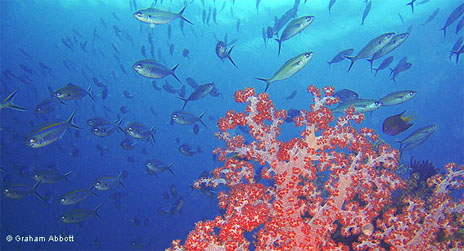
A barely-explored underwater coral reef has revealed what scientists are calling a “species factory,†due to dozens of new exotic species of fish and corals being discovered there in two recent expeditions. Though it lies in an area one tenth the size of the Great Barrier Reef, the Bird’s Head Seascape – just off the Indonesian province of Papua – contains roughly 50 percent more reef-building coral species than its more famous counterpart. It was studied in the 1880s by Victorian explorers but remained largely overlooked until recently.
Dr Mark Erdmann of Conservation International (CI), who led the two missions, commented: “These reefs are species factories. This region is simply mind-blowing in terms of its diversity. For our surveys to uncover over 50 new species of coral, fish, and mantis shrimp in less than six weeks is unheard of in this day and age. From the perspective of marine – and especially coral reef – bio-diversity, it is unparalleled for an area of this size.”
Among some of the creatures discovered were two new epaulette sharks, several types of reef fish, new types of mantis shrimp and 20 new reef-building corals. An astonishing total of 1,200 fish species and 600 coral species were recorded – three quarters of the world’s total.
To protect the biodiversity and ecological integrity of the area, CI is calling for measures to curb harmful activities such as bomb and cyanide fishing, in addition to the negative impact of sedimentary byproducts from timber and mining outfits along the coast. Currently, only one-tenth of the area is protected.
However, scientists hope that the unique location of the Bird’s Head reef will shelter it somewhat from the effects of human development: it is believed that the strong currents and cool water will increase the reef’s resistance to “coral bleaching,†a phenomenon that already has damaged other reefs.
The reef lies at the centre of the so-called “Coral Triangle†of the Pacific Ocean, which includes the Philippines, Indonesia, Papua New Guinea and the Solomon Islands. Scientists suggest that this region is the “centre of origin†for many diverse ocean species before later geological movements and changing sea levels allowed for species migration – resulting in the apparently unparalleled biodiversity of the area.



